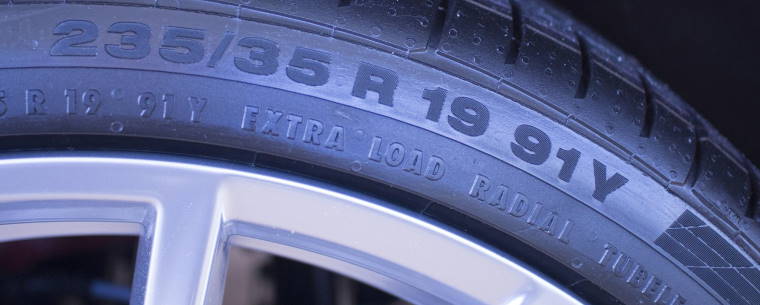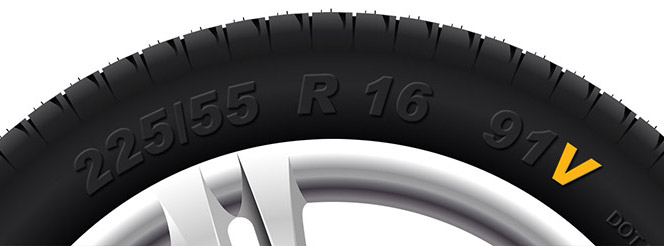What is Tyre Speed Rating?
Published on: Monday, 01 June 2020 | Author: Bradley Jando
When it comes to buying new tyres for your vehicle, you may have heard about the tyre speed rating. If you don't have a lot of knowledge about cars, you may be tempted to ignore this when shopping for replacements or you may not have heard of it at all. The tyre speed rating, however, is an important factor that needs to be considered when choosing suitable tyres for your vehicle.
What is the Speed Rating on Tyres?
The speed rating is an indication of how fast a tyre is legally allowed to go, typically varying between 30 and over 150 miles per hour.
Every tyre has a selection of numbers and letters written along the side of it, with some of these digits referring to the individual tyre’s width, height, method of construction and diameter, along with other factors. The final digit of this code is often a letter which details the tyre’s speed rating.
What are the Different Speed Ratings on Tyres?
Tyres come in different constructions and sizes to fit the vehicles they’re intended for. For example, a tractor tyre wouldn’t work on a sports car or vice versa. In the list of speed ratings, there are a total of 22 ratings that indicate a set maximum speed. These are:
B - 31mph
C - 37mph
D - 40mph
E - 43mph
F - 50mph
G - 56mph
J - 62mph
K - 68mph
L - 75mph
M - 81mph
N - 87mph
P - 93mph
Q - 99mph
R - 106mph
S - 112mph
T - 118mph
U - 124mph
H - 130mph
V - 149mph
W - 168mph
Y - 186mph
ZR - 150mph or over
Does the Speed Rating on a Car Matter?
As previously mentioned, the speed rating is the maximum speed a tyre is legally approved for. As a car begins to drive at faster speeds, the tyres gain more friction along the ground and generate more heat. For example, Formula One racing cars require tyres with the highest speed rating, as they will be moving at an extremely fast pace.
If a normal car was to use a tyre with a low speed rating but exceed the advised limit, there would be a risk of the tyre failing at a high speed, potentially leading to an accident and endangering everyone in the car as well as other drivers and pedestrians in the vicinity.
How to Find the Speed Rating on Tyres
On most UK tyres, the speed rating is indicated as the last letter on the code situated at the side of the tyre. Simply use this letter as a reference for identifying the speed rating of the tyres on your vehicle and keep a note of it for when you need to replace your tyres in the future.
What Speed Rating Should My Tyres Be?
The tyres on your car will have a speed rating that exceeds the maximum speed that you would typically be expected to travel at. Not only that, but it will be calculated at the maximum load capacity approved by your car’s manufacturer, taking into consideration how heavy your vehicle would be with a person in every seat and all storage compartments full. Although partly based on the type of car, manufacturers primarily base the choice of tyre on safety, ensuring that the tyres are capable of working beyond the vehicle’s physical and legal capabilities. By using tyres with a higher speed rating, manufacturers are able to guarantee that the tyre can persevere through exertion caused by high speed driving, braking, acceleration and cornering.
The speed rating of your tyres will depend on your vehicle, its size and a number of other factors. However, on average, the tyres of family cars will often possess an H or V rating, which is equivalent to 130 or 149mph, and small city cars will often possess a T rating, equivalent to 118mph. If you’re unsure of the speed rating of your current tyres or want help with identifying the correct speed rating for new tyres, you should ask for advice from a specialist.




